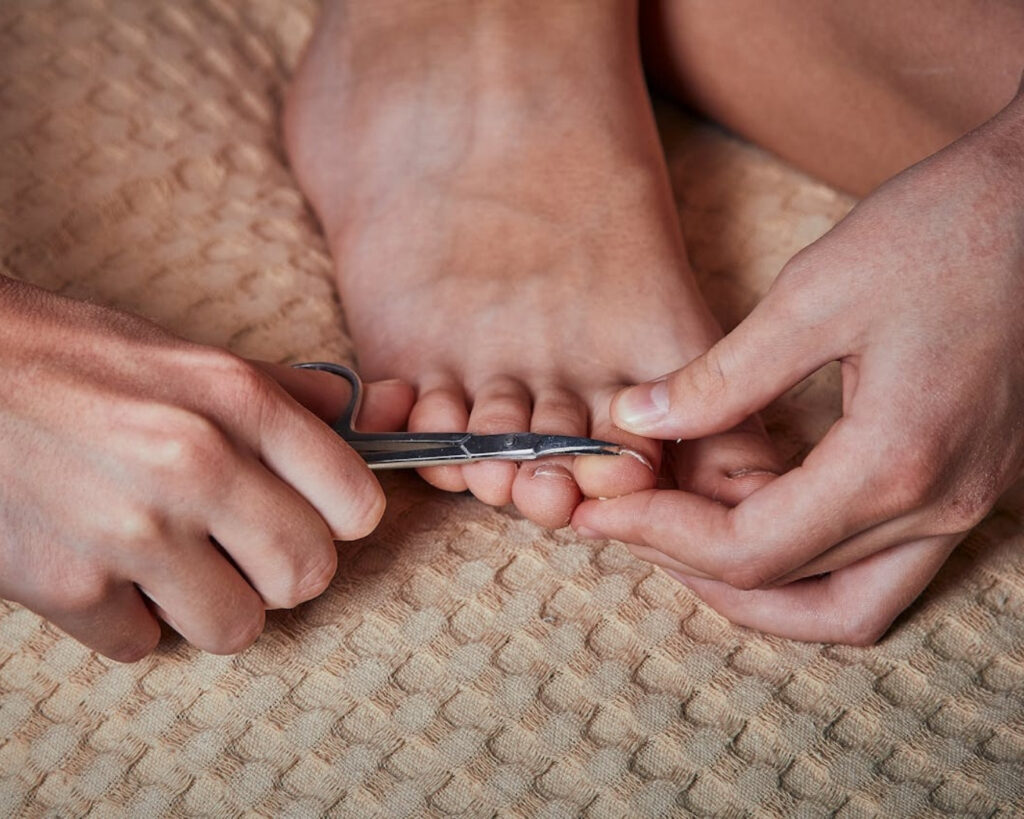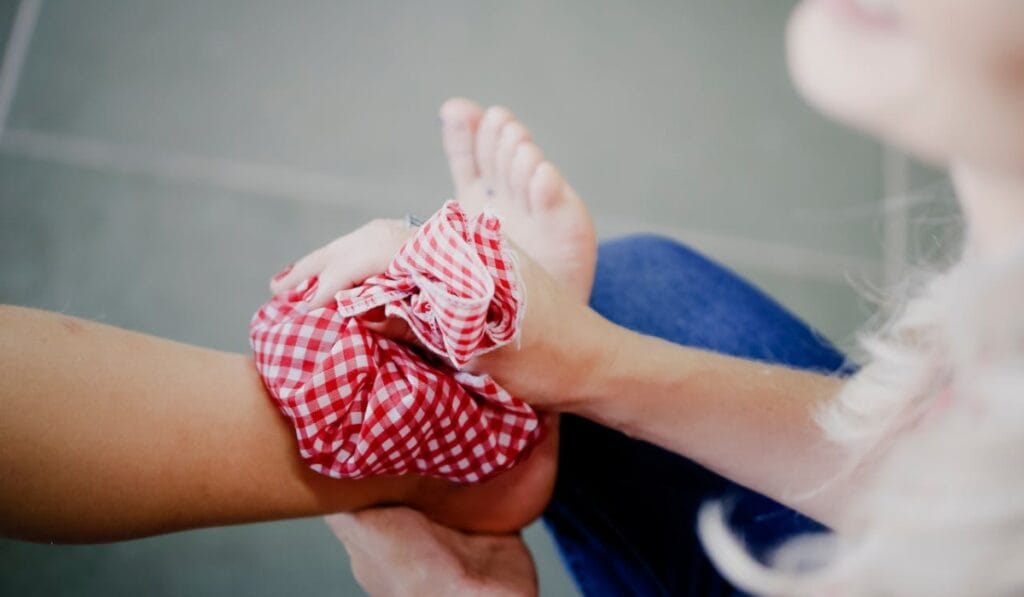Your feet have carried you through your life, from the crawling stage up until now, and they have supported your entire body weight with every step. However, despite their incredible strength, feet are often relegated to an after-thought until pain strikes.
Painful feet tend to come on suddenly – sometimes just affecting one foot, although it can affect both at the same time. It’s the kind of pain that can turn even the most routine tasks into an ordeal you have to endure, especially for those with an active lifestyle where you’re always on your feet.
Here at The Health Suite in Leicester, we regularly see patients struggling with various foot conditions that could have been prevented or treated more effectively if they had earlier intervention. That’s why we believe having an understanding of common podiatry issues and their solutions can help you maintain healthy, pain-free feet for years to come.
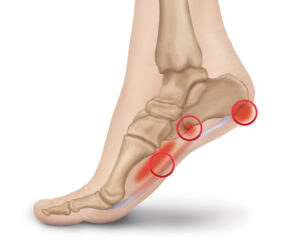
1. Plantar Fasciitis
Plantar Fasciitis is perhaps one of the most frequent complaints we encounter. It affects the fascia which is a thick band of tissue connecting your heel bone to your toes.
Patients who suffer from this describe a stabbing pain in the heel that’s worse when taking the first steps out of bed or after longer periods of rest.
Unlike other kinds of foot pain which can happen all of a sudden, this is a condition that often develops over time due to repetitive strain on the plantar fascia. There are of course risk factors, which include being overweight, having high arches or flat feet, wearing shoes that are worn-out, or having a sudden increase in physical activity levels due to lifestyle change.
How we treat it:
At The Health Suite, we offer a combination of gait analysis, custom orthotics, and targeted exercises to relieve inflammation and prevent recurrence.
Within six to twelve months you’ll see improvements with consistent treatment. But as always the general rule is that early intervention means faster resolution and prevents the condition from becoming chronic.
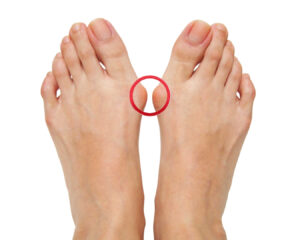
2. Bunions
You’ve most likely heard of bunions – they’re a bony looking bump that forms at the base of the big toe and projects outwardly from the side. They are most often hereditary, but are made worse by ill-fitting footwear or certain types of shoes like high heels that compress the toes together.
You might have symptoms like:
Swelling/soreness around the big toe joint
Visible bump or misalignment
Pain when walking or wearing shoes
How we treat it:
Our podiatrists here at The Health Suite carry out diagnostics including biomechanical assessments, footwear advice, and conservative treatments like splints and padding. In cases that are more advanced, we can also refer for surgical correction if necessary.
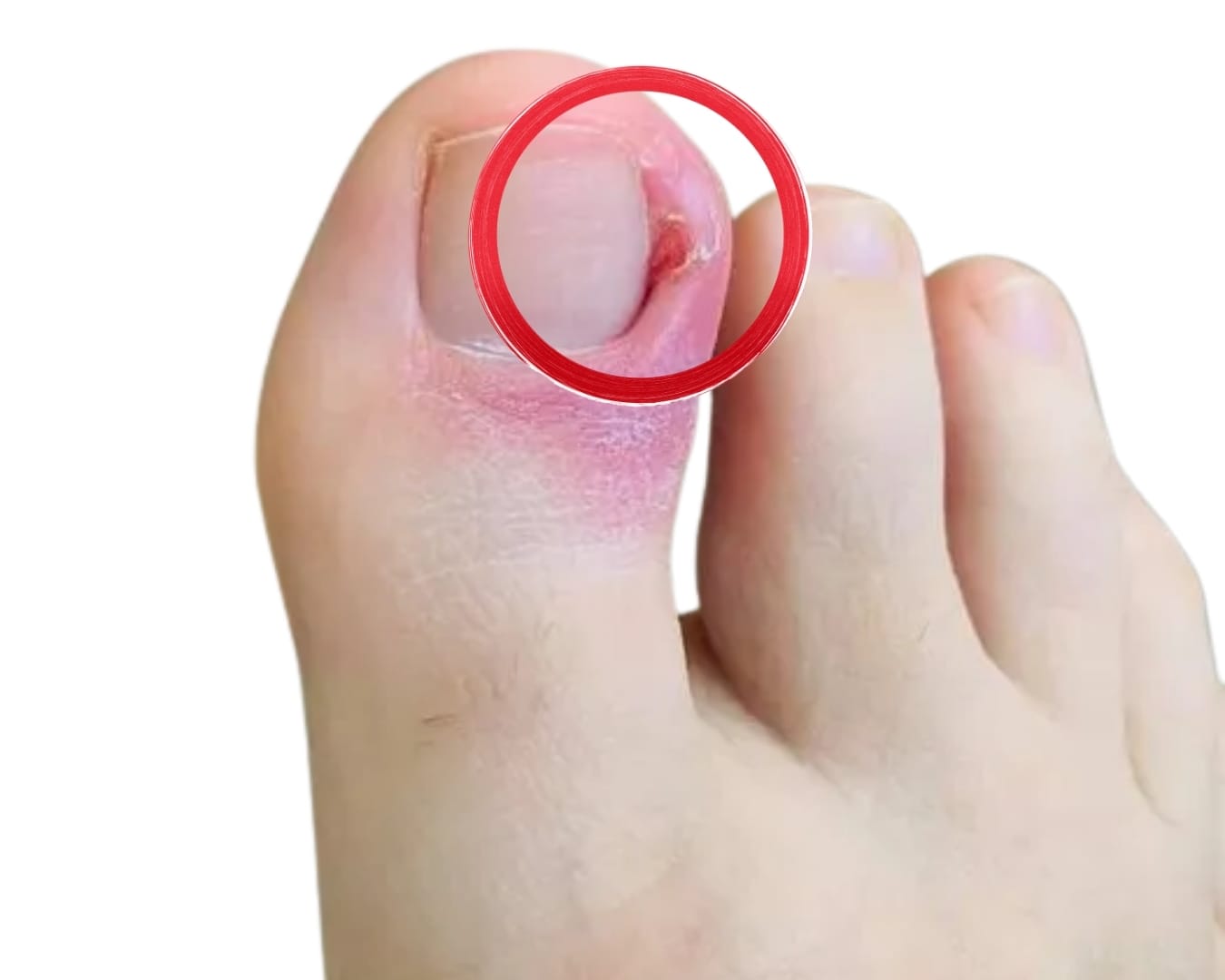
3. Ingrown Toenails
They’re a small problem but a big pain. When the edge of a toenail grows into the surrounding skin, it can cause swelling, pain, redness, and in some cases infection. It commonly results from improper nail trimming, tight footwear, or injury to the toe – although it can happen regardless of these factors too. The big toe is most commonly affected, though any toenail can become ingrown.
Common symptoms:
Tenderness or swelling along the nail edge
Pus or bleeding from the affected toe
Difficulty walking due to pain
How to reduce your risk:
Cutting nails straight across, not curved
Avoid cutting nails too short
Wearing properly fitted shoes
Soaking the affected toe in warm water
How we treat it:
We offer gentle, professional nail care and if needed, minor nail surgery under local anaesthetic, carried out in a sterile and comfortable environment.
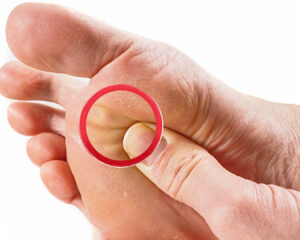
4. Metatarsalgia
The name might sound a bit esoteric, but metatarsalgia refers to inflammation in the ball of the foot, which is where the metatarsal bones (there are 5 in each foot) are located. It’s usually due to overuse or injury.
Typical symptoms:
Sharp pain, aching or burning in the ball of the foot
Pain whilst walking barefoot
Tingling/numbness in toes
How we treat it:
Our approach includes things like pressure mapping, footwear guidance, custom insoles, and activity modification advice. All of these methods are clinically proven to relieve stress on the affected area – ensuring relief with consistent care.
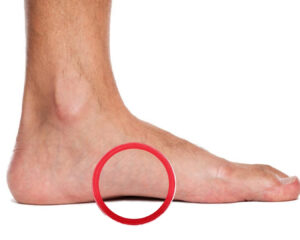
5. Flat Feet & Fallen Arches
Flat feet occur when the arches of the feet collapse, leading to improper weight distribution and strain on other areas like the knees and hips.
Common symptoms:
- Pain in the arches or heels
- Ankle swelling
- Fatigue or discomfort after standing for long periods
How we treat it:
We conduct biomechanical assessments and provide tailored orthotics to support the arches, as well as strengthening exercises to improve posture and gait.
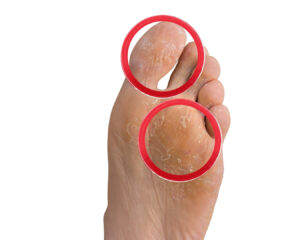
6. Athlete’s Foot
Athlete’s foot is somewhat of a misnomer in that it affects people from all walks of life, not just athletes. It’s a fungal infection that people typically get from moist environments like sweaty shoes and socks, communal showers, and swimming pool areas.
Symptoms include itching, burning, scaling, and sometimes blistering between the toes or on the soles of the feet. It can spread to other areas of the body if left untreated.
Prevention:
- Keeping feet clean dry
- Antifungal powders or sprays
- Moisture-wicking socks and breathable shoes
- Avoiding walking barefoot in public places
- Changing socks regularly if feet perspire a lot
How we treat it:
Over-the-counter antifungal treatments are often effective, but persistent infections may require prescription medications, which we offer here at The Health Suite.
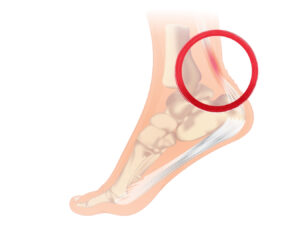
7. Achilles Tendinitis
We don’t call it the Achilles Heel for nothing…
The Achilles tendon connects the calf muscles to the heel bone, and can become painful and inflamed if overused or if you have a sudden lifestyle change. We commonly see it here in runners and those who partake in sports that involve a lot of explosive movements like jumping or quick direction changes.
You’ll typically notice a dull ache or sharp pain running up the back of your heel that feels worse when you first get out of bed. Many of the patients we see here at The Health Suite tell us it’s like their heel has become frozen overnight. This kind of discomfort often flares up again after a workout or long walk, and you might even find yourself wincing when someone accidentally bumps into your heel.
How we can treat it:
- Rest and activity modification
- Ice therapy after activity
- Exercises to strengthen and stretch
- Heel lifts to reduce tension on the tendon
- Physical therapy for severe cases
Early treatment typically results in full recovery within several weeks to months.
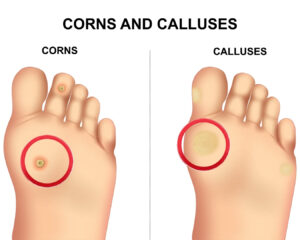
8. Corns and Calluses
Corns and calluses are areas of hard skin that develop as a result of the skin responding to repeated pressure or friction – it’s supposed to protect your feet in theory. They can become painful however when they grow too thick or develop in problematic locations.
Corns usually form on the tops and sides of toes, whereas calluses usually appear on the soles of the feet. They’re both conditions that are caused by ill-fitting shoes or biomechanical issues that create uneven pressure distribution.
Management includes:
- Wearing properly fitted shoes with adequate toe room
- Using protective pads to reduce pressure
- Gently removing excess skin with a pumice stone
- Moisturising feet regularly to prevent cracking
- Addressing underlying biomechanical issues
For patients who are diabetic, you should never attempt self-treatment of corns and calluses because there is an increased risk of infection. Getting professional care is essential for safe management.
When to See a Podiatrist
Persistent foot pain is never normal or something you should just get used to with age.
If discomfort is affecting your daily life, it’s time to visit our podiatrists at The Health Suite.
Here at The Health Suite Leicester, our experienced team uses the latest in diagnostics and personalised care plans to address foot problems at the root, helping you get back to walking comfortably and confidently.
Book a consultation with us today – full podiatry assessments and gait analysis. Access to custom orthotics, foot therapies, and minor procedures.
Appointments are available without a GP referral.
Book your consultation at The Health Suite Leicester today.
